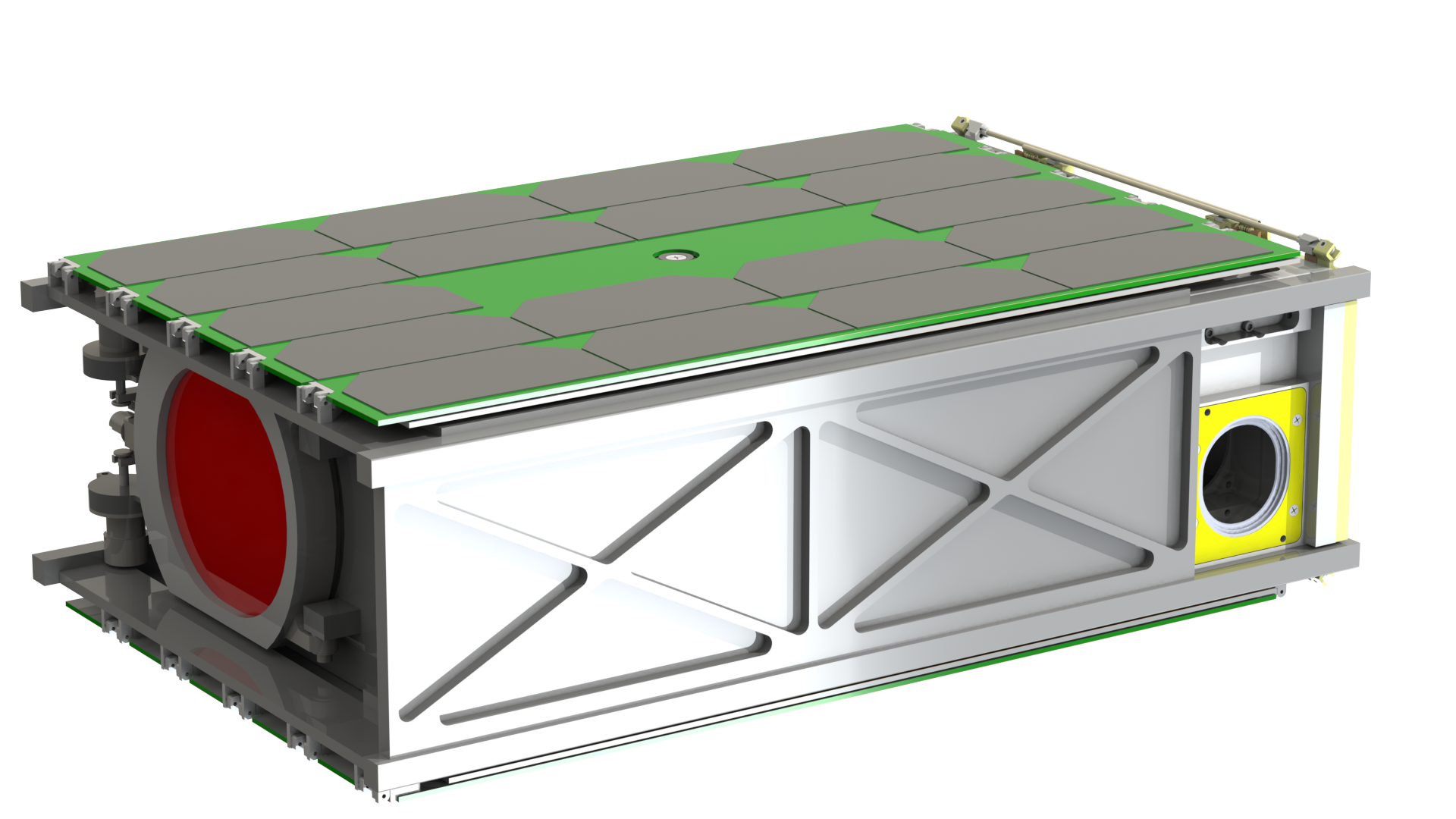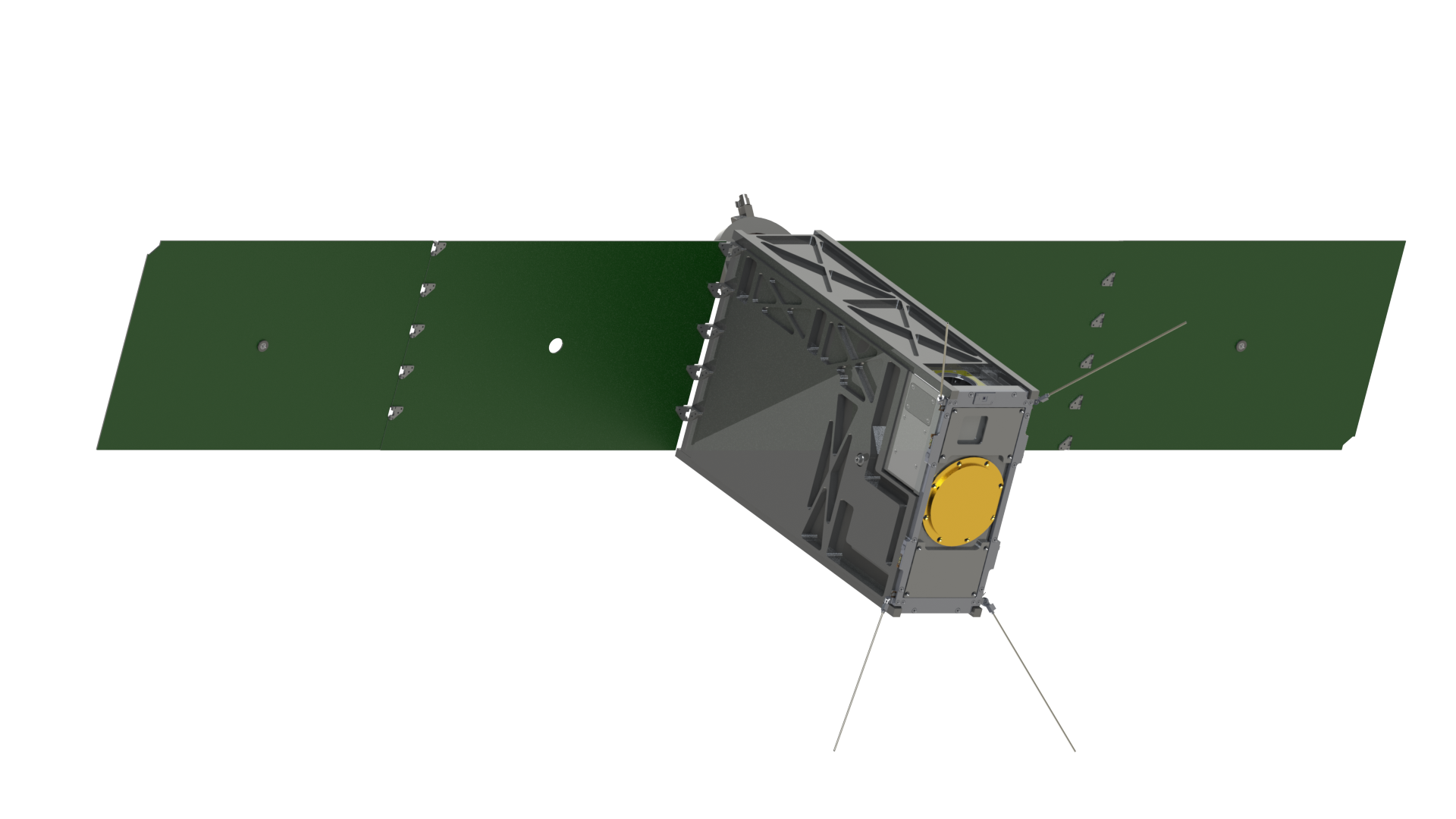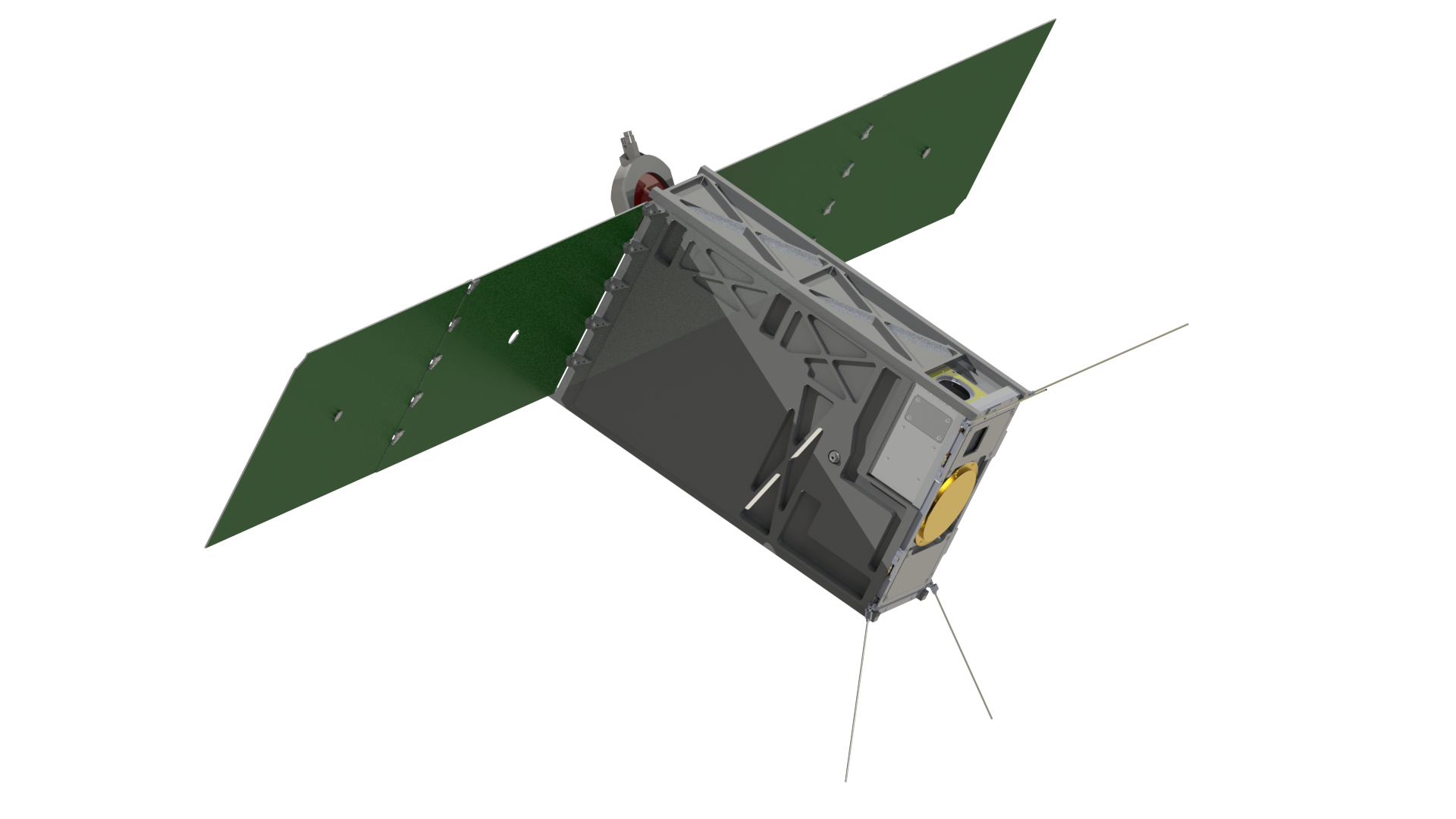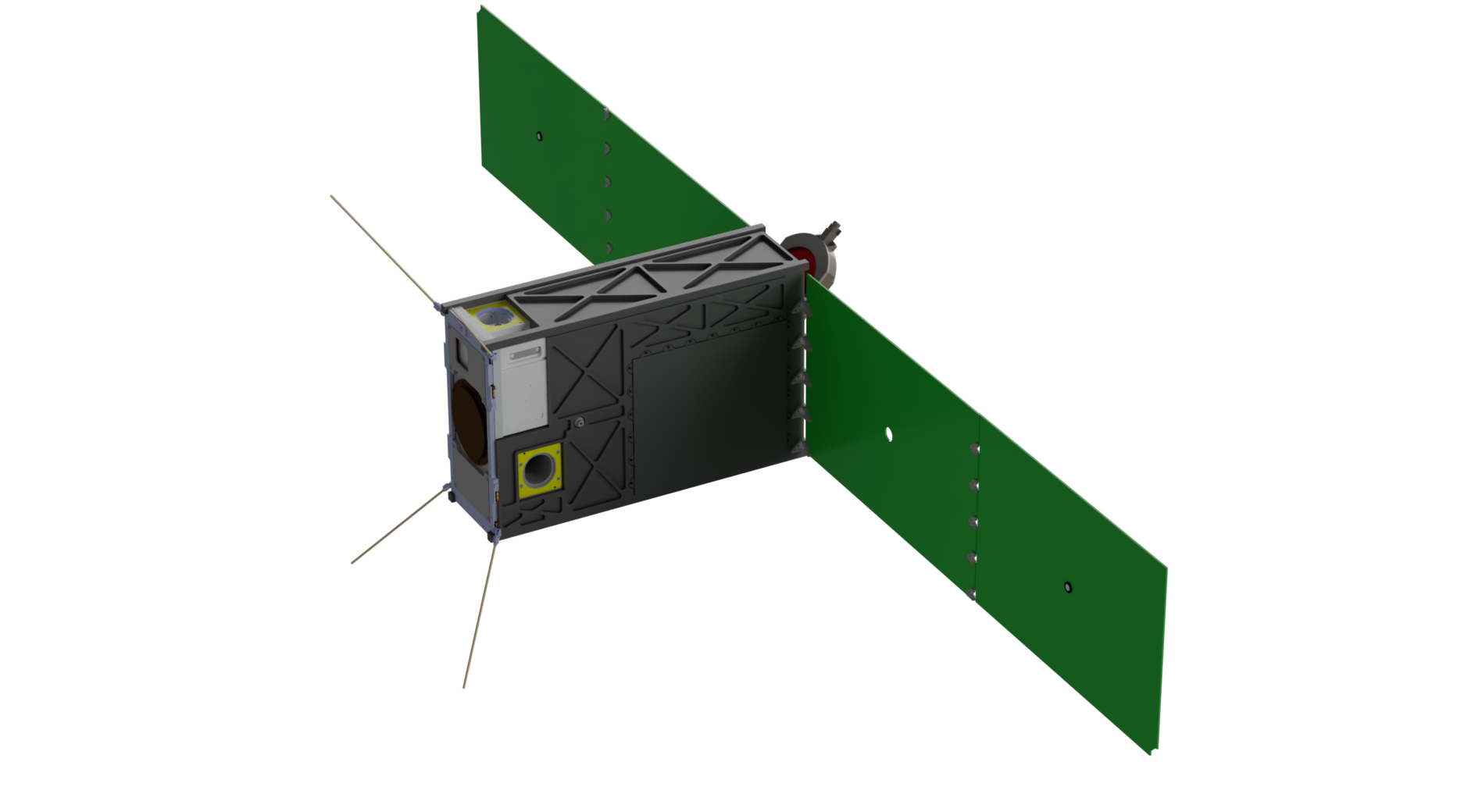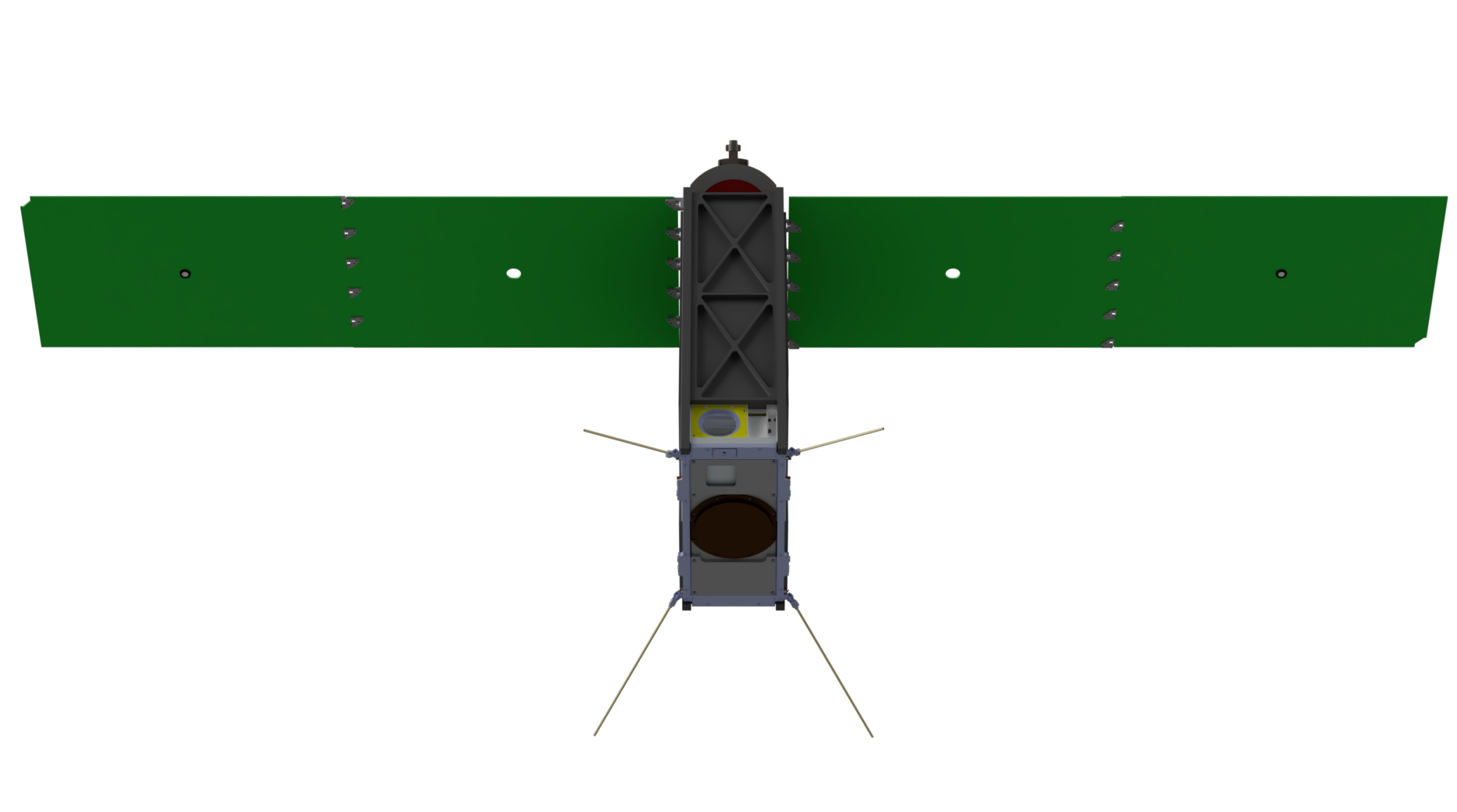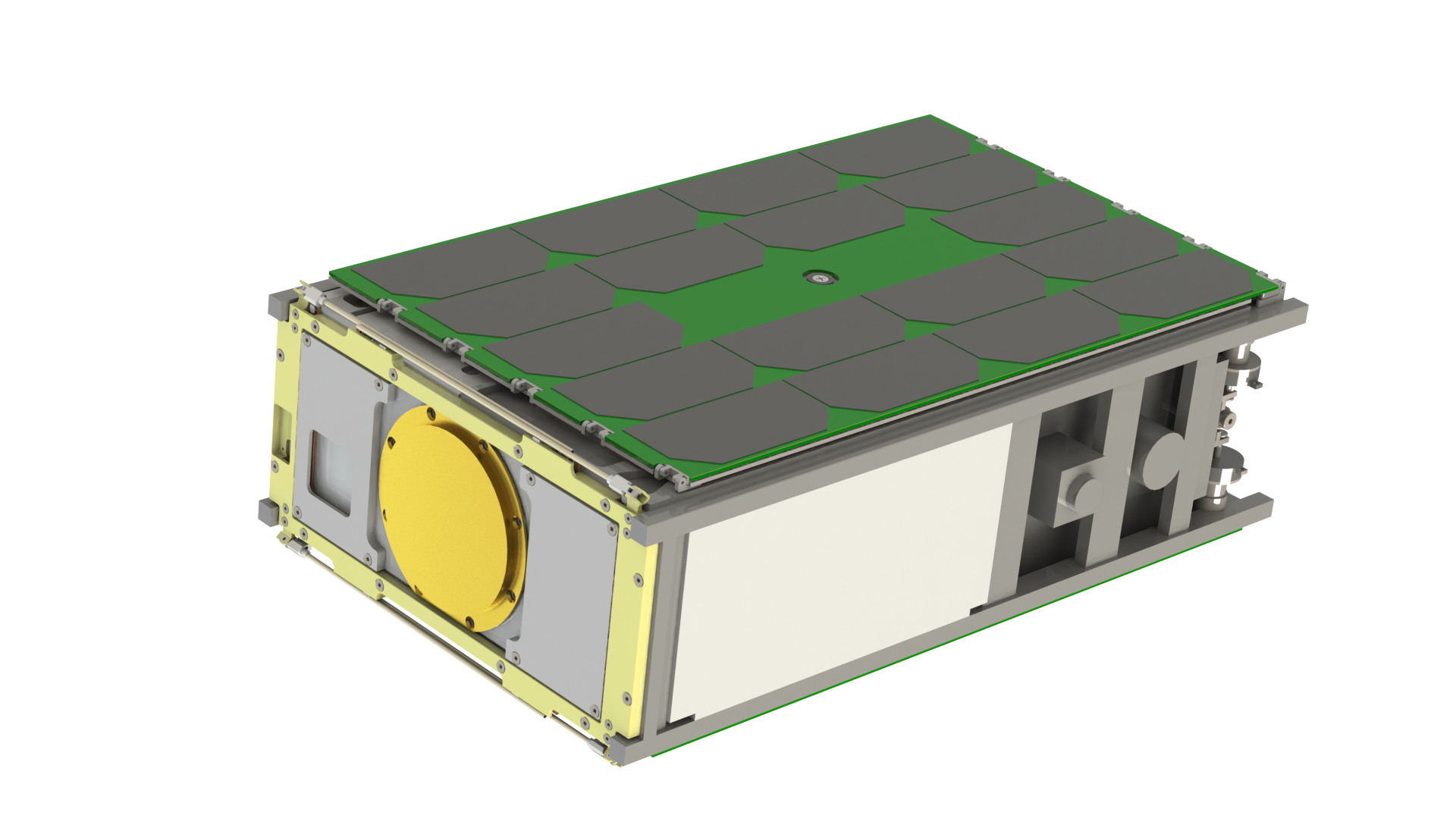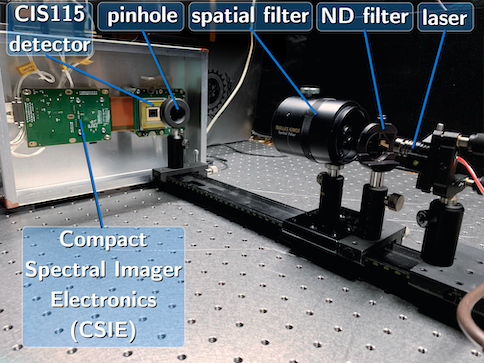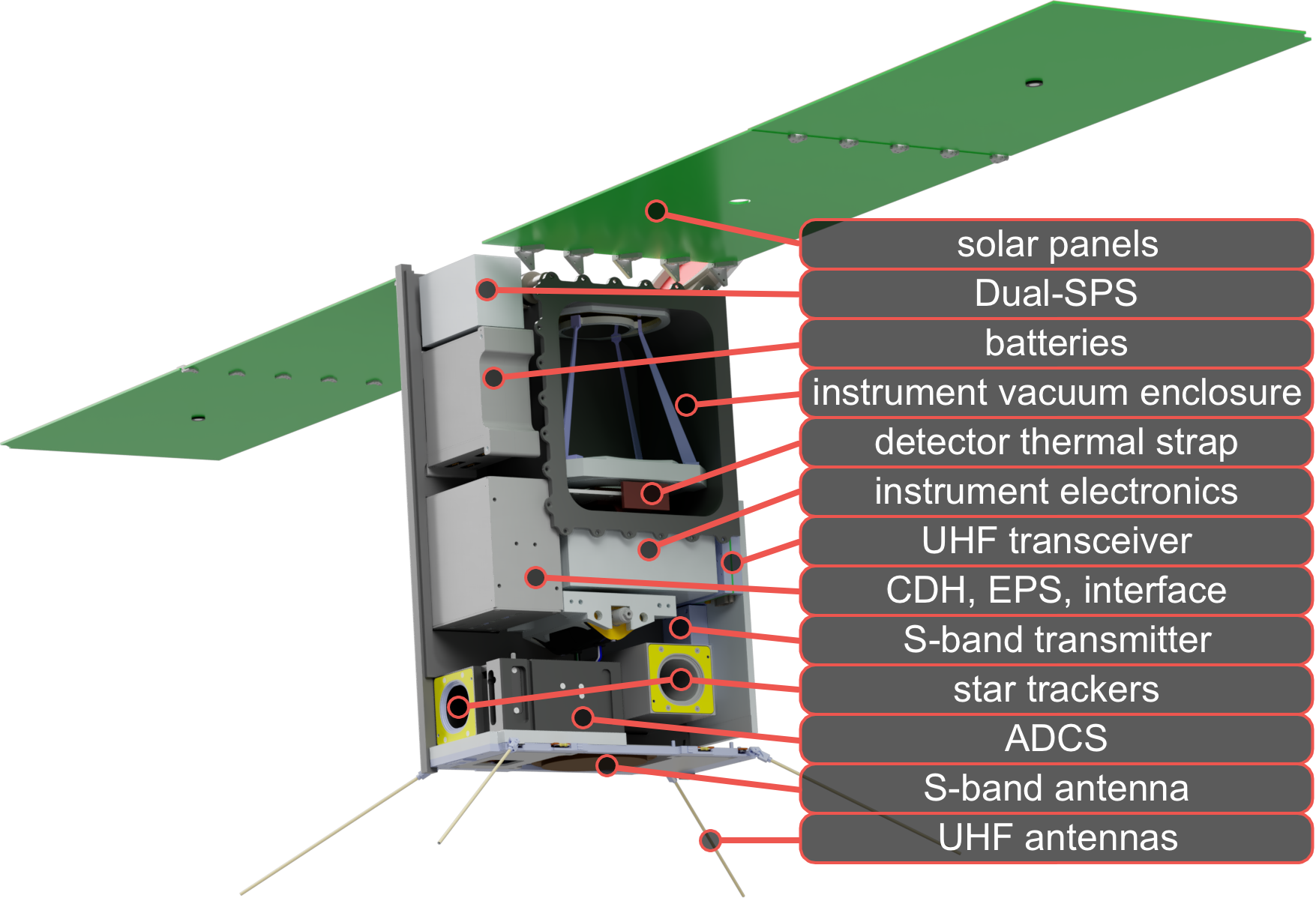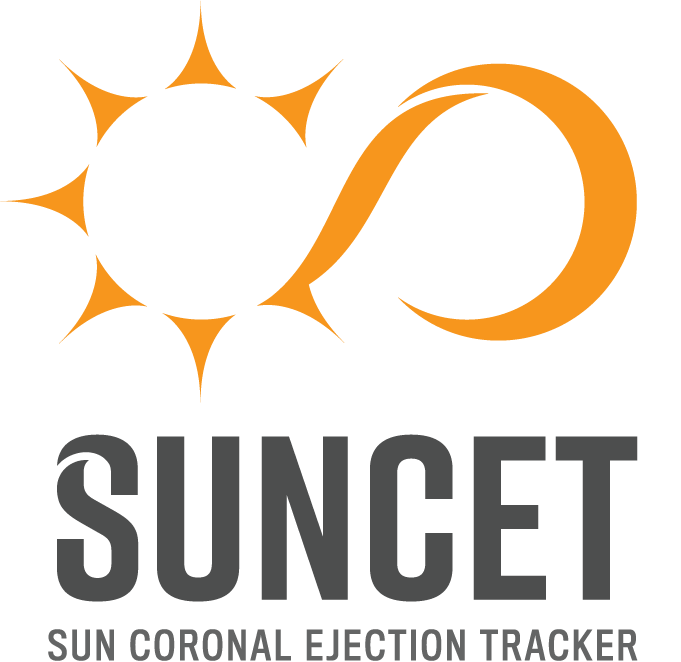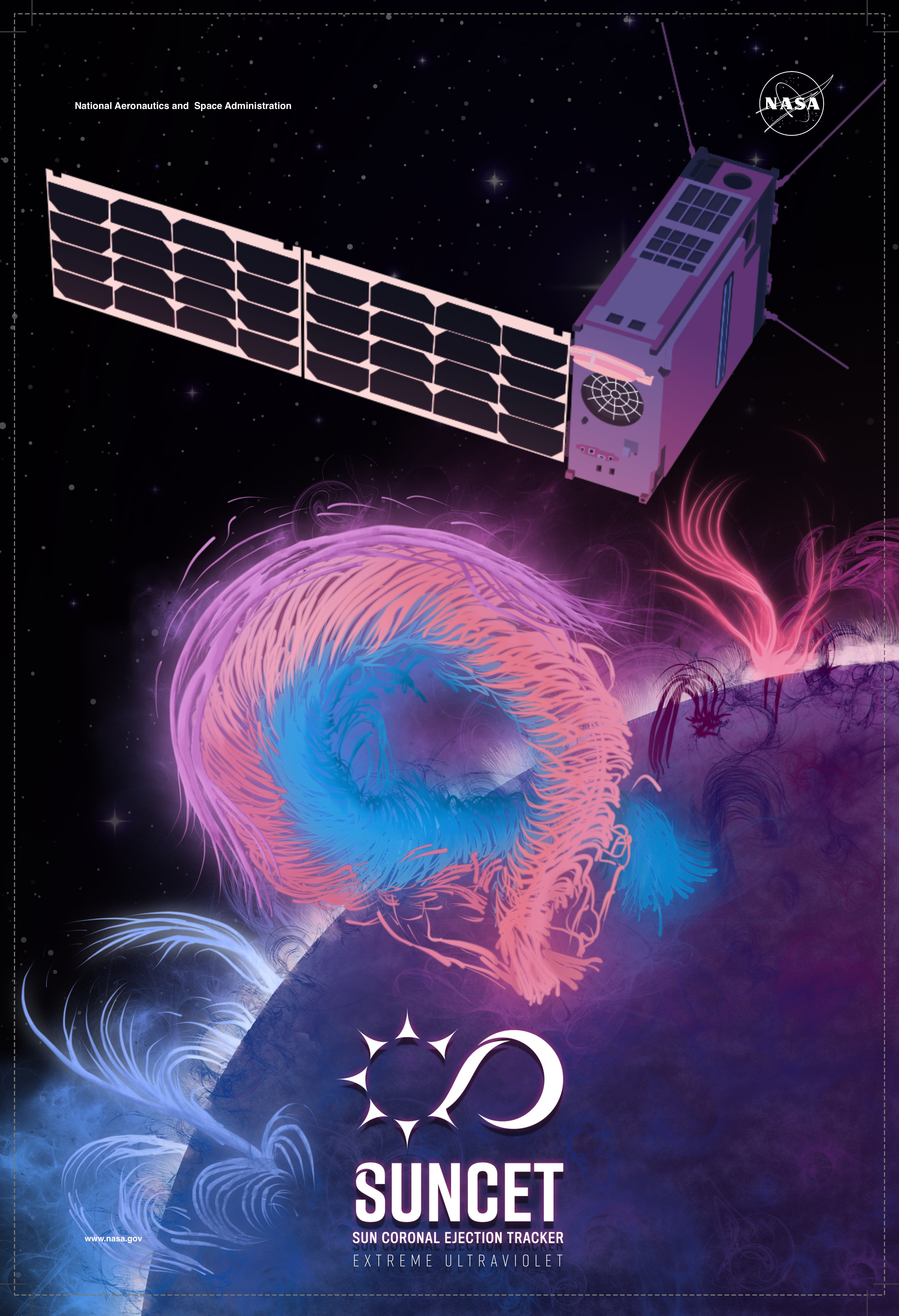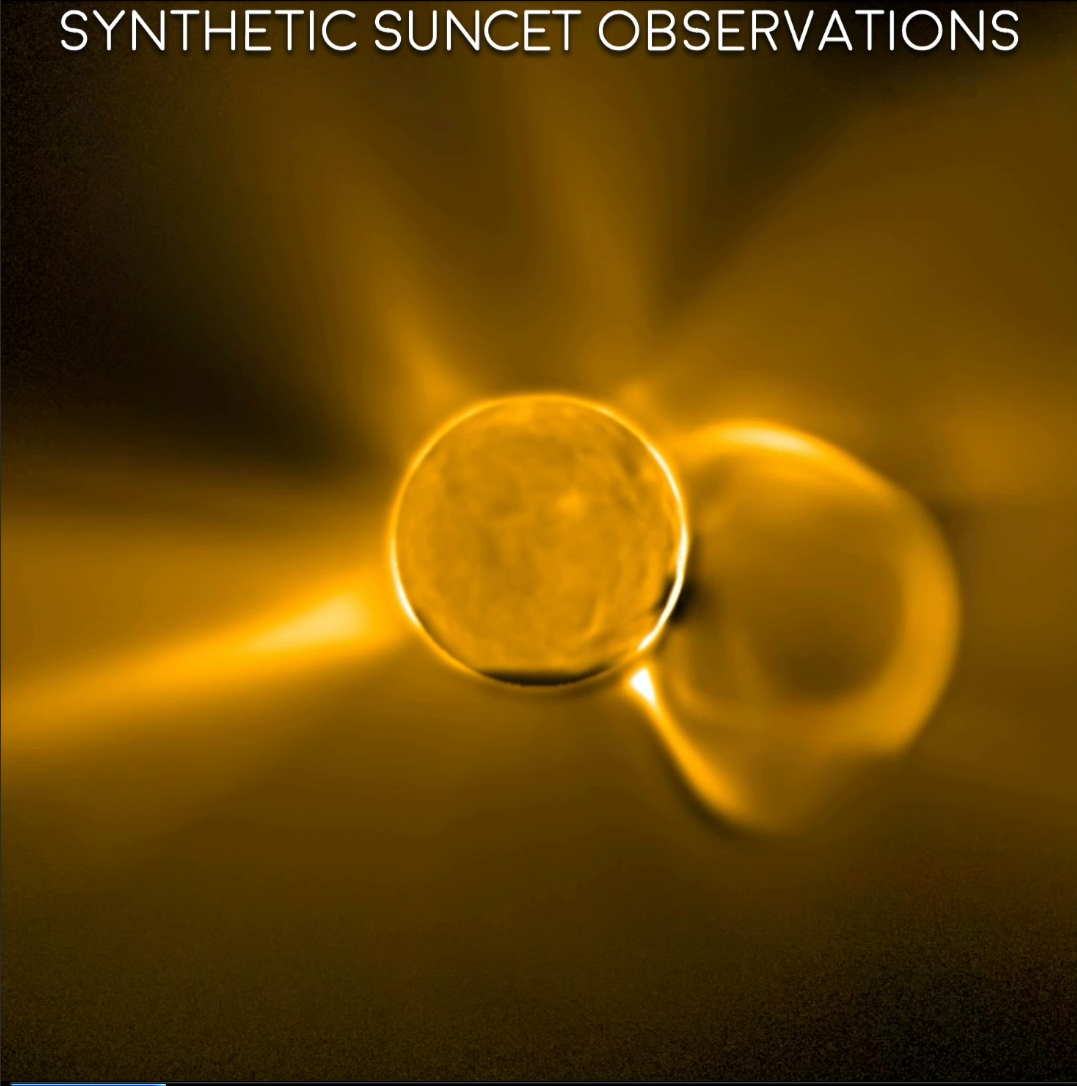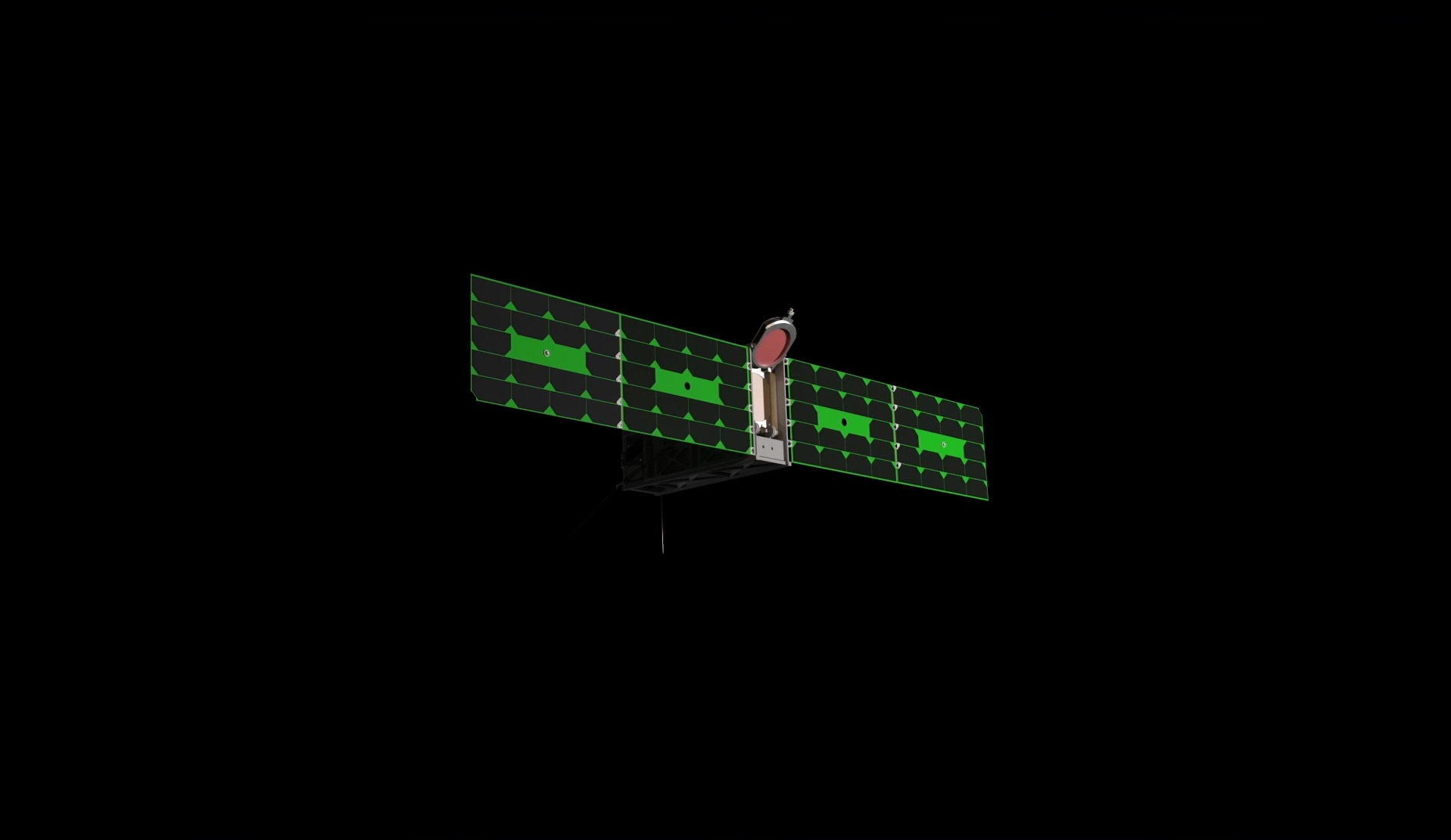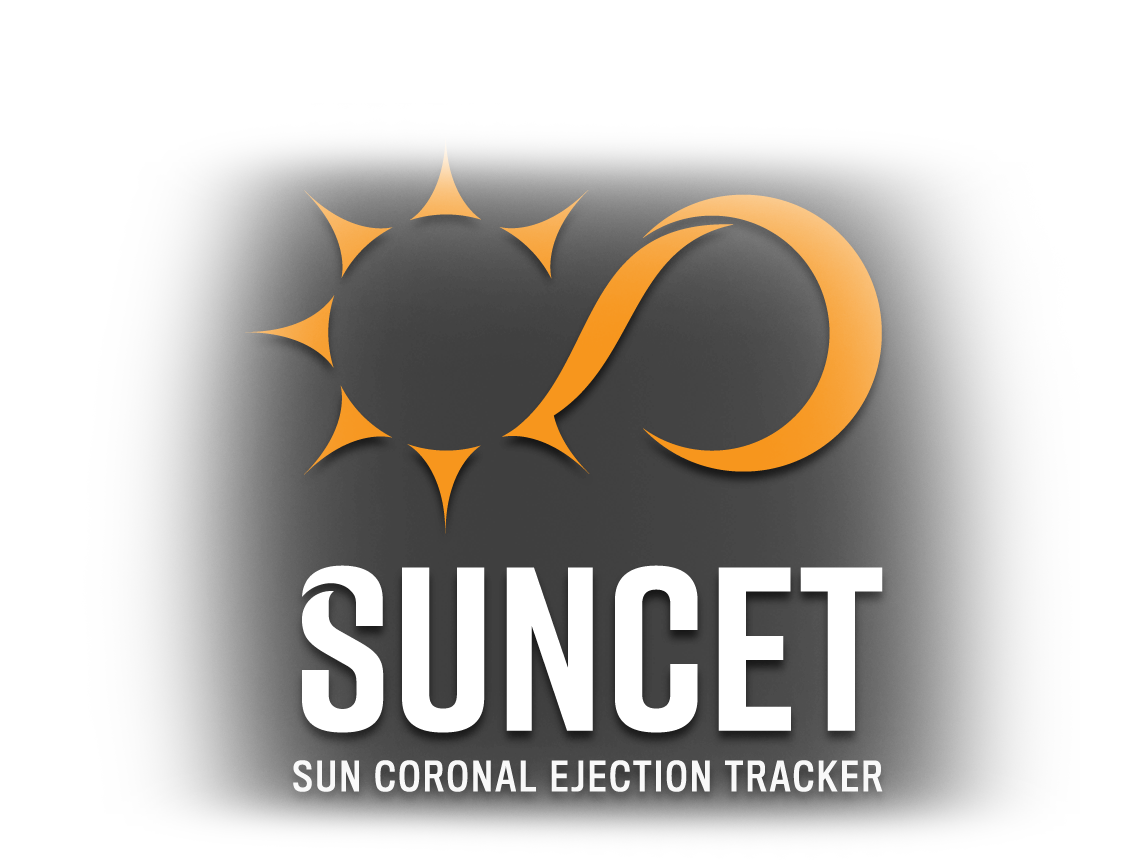
Uncovering the mechanism of how massive explosions accelerate from the Sun
Blasting matter from the Sun at hundreds to thousands of miles per second, coronal mass ejections (CMEs) are some of the most massive and powerful phenomena in the solar system. When directed at Earth, they can wreak havoc on its technosphere, leading to blackouts on the ground and life-threatening situations for astronauts with sometimes only hours to prepare. Yet what mechanisms drive these outbursts to such incredible speeds remains unknown.
That’s where NASA’s Sun Coronal Ejection Tracker (SunCET) comes in. Jointly led by the Johns Hopkins Applied Physics Laboratory and the Laboratory for Atmospheric and Space Physics at the University of Colorado, Boulder, SunCET will capture the first complete acceleration sequences of CMEs, from their beginnings in the lower part of the Sun’s atmosphere to at least four solar radii — roughly 432,700 miles (696,200 kilometers) — from the solar surface.
CMEs are enormous clouds of entangled magnetic fields and hot, charged atoms and electrons called plasma that burst from the Sun’s blazing atmosphere — the corona — at speeds of up to almost 1,900 miles per second (3,000 kilometers per second). Each month, roughly 100 of these explosions blast billions of tons of particles with 10 times the energy of the asteroid impact that wiped out the dinosaurs. Consequently, CMEs are critical drivers of severe space weather with significant implications for Earth. Those directed at the planet can interrupt GPS signals, lethally threaten astronauts and — most importantly — knock out the electrical power grid on the ground.
Beyond their practical implications for an increasingly technological society, CMEs also provide a rare opportunity to study the mechanics of plasma acceleration in a regime that researchers just cannot reproduce in the laboratory. In the standard model of a CME’s configuration in the solar corona, the CME creates a growing flux rope, which overlying magnetic fields resist. As a result, CMEs can only escape from the corona by accelerating to overcome the overlying magnetic field, making them a natural probe of the Sun’s surrounding magnetic field. Despite decades of observations using dozens of spacecraft and ground-based observatories collectively known as the Heliophysics System Observatory (HSO), however, scientists are still missing data from a critical part of the picture: the middle corona, the region where CMEs undergo much of their acceleration. Because of the region’s rapidly diminishing brightness, spacecraft have been unable to completely image CMEs as they grow and accelerate, meaning scientists are only able to hypothesize about the forces at work.
A simulation video of the view that NASA’s new SunCET mission will have of an exploding CME. The video also illustrates the important current region around the Sun where unknown mechanisms accelerate CMEs into space. The SunCET mission aims to fill this gap.
Credit: James Mason/Dan Seaton/Meng Jin
Science Goals
Planned to be ready to launch in 2025, SunCET’s core objective is to determine what physical mechanisms dominate CME acceleration as a function of both altitude and time. As such, the mission has one primary goal:
Determine the complete CME acceleration profile for at least 350 CMEs, with speeds up to 621 miles (1,000 kilometers) per second.
When CMEs erupt, a period of acceleration close to the Sun’s surface rapidly propels the particles into space. Physicists have suggested several possible mechanisms for this sudden propulsion. The simplest of them is the torus instability, in which a toroidal current ring falls out of equilibrium with the external magnetic field. More sophisticated models also account for the three-dimensional structure and dynamics of the coronal magnetic field. By directly observing CMEs through their complete acceleration phase, SunCET will provide strong modeling constraints that currently do not exist.
The vast majority of all CMEs (98%) have peak velocities below 621 miles (1,000 kilometers) per second, but SunCET is capable of characterizing CMEs with velocities up to 2,416 miles (3,890 kilometers) per second. To capture a reasonable sample of those rare super-fast CMEs as well as rare “stealth” CMEs, SunCET is being designed to provide measurements for at least 350 CMEs over its eight-month prime mission lifetime. Given that SunCET’s mission is during the peak of the next solar maximum when the Sun is most active, however, it’s expected that SunCET could actually witness up to 2,100 CMEs during its mission.
The mission’s goal also closely aligns with the overarching goals of NASA’s Heliophysics Division, which aims to explore the physical processes happening in the space environment throughout the solar system. By doing so, it would uncover the knowledge and develop the capabilities needed to detect and predict extreme space weather events to protect life, society and the technology we have on Earth and in space.
SunCET is uniquely tailored to address these goals and this challenge: It has a wide field of view that is unprecedented in solar extreme ultraviolet (EUV) images to capture the region where the bulk of CME acceleration occurs. It also carries a novel, simultaneous high-dynamic-range detector to overcome the inherent technical challenge presented by the corona’s rapid decline in the brightness. SunCET thus fills an observational gap in the HSO that will enhance the science return from the whole suite of observatories. Developing miniaturized EUV instruments like SunCET is also a critical technological development needed for next-generation solar observatories.
Instrument
SunCET uses a specially developed camera sensor capable of capturing complete images and videos of a CME through its entire acceleration profile, from the lower part of the Sun’s atmosphere, or corona, through the middle corona roughly 432,700 miles (696,200 kilometers) from the solar surface.
The spacecraft relies on the wide field of view of a compact Ritchey-Chrétien telescope. The telescope is largely based on the DRACO telescope that enabled NASA’s DART mission to accomplish the world’s first planetary defense test mission. Unlike DRACO’s mirror, however, SunCET’s has coatings that reflect EUV light, similar to those on other mission instruments used to observe the Sun, such as the Extreme Ultraviolet Imager (EUVI) on NASA’s Solar Terrestrial Relations Observatory (STEREO) mission and the Extreme ultraviolet Imaging Telescope (EIT) on the NASA-European Space Agency Solar and Heliospheric Observatory (SOHO) mission.
Given that the Sun is roughly ten thousand to a billion times brighter than its surrounding atmosphere, most of these previous solar imagers either focused on just the solar disk or blocked it out with coronagraphs to concentrate on the corona. In doing so, however, they missed the exact region where CME acceleration occurs. Multiple research groups have tried using post-processing techniques to merge coronagraph and EUV images, but the process has been challenging and the methods riddled with caveats because of the way images were captured.
SunCET’s camera overcomes these obstacles by using a new simultaneous high-dynamic-range (or SHDR) algorithm. The system uses the camera’s compact spectral imager electronics system to independently read out rows of pixels on the detector. This capability allows it to create composite images of the bright solar disk with the very faint solar corona. The algorithm programs a circular region near the center of the sensor to take short exposures of the bright solar disk (baseline value of 0.035 seconds) while simultaneously taking long exposures (baseline value of 15 seconds) of the dim corona across the rest of the pixels.
The spacecraft’s onboard computer then takes the median across several sequential exposures — a process dubbed image-stack median, using a baseline of 3-4 images for long-exposure pixels and 10 images for short-exposure pixels — to return a final image: a complete view of an erupting CME. The onboard processes take only a minute to complete, and the final composite image is then compressed and stored in an onboard flash memory.
Technical Specifications
| Parameter | Value |
|---|---|
| Field of view | ±1.34° × 1° (±5.34 R☉ × ±4 R☉) |
| Dynamic range | 2 million |
| Spatial resolution | ~20 arcseconds |
| Bandpass | 170-200 Å |
| Exposure time | 0.035 seconds (solar disk) and 15 seconds (off disk) |
| Cadence | 1 minute (nominal) 15 seconds (max) |
| Typical signal to noise ratio of CMEs at 3.5 R☉ | 21-200 |
| Data generated | ~350 MB/day |
| Spacecraft size | 6U CubeSat |
| Spacecraft mass | ≤12 kg |
| Orbit | (acceptable) 415- to 600-km altitude, ≥35° inclination (preferred) 500-km altitude, 98° inclination (dawn-dusk Sun-synchronous) |
| Mission lifetime | ≥8 months |
| Launch readiness date | 2025 Q1 |
Team
SunCET is jointly led by Johns Hopkins APL and the University of Colorado, Boulder Laboratory for Atmospheric and Space Physics (CU/LASP).

Spencer Boyajian
Bus Mechanical Engineer
CU/Laboratory for Atmospheric and Space Physics

Amal Chandran
LASP Project Manager (current)
CU/Laboratory for Atmospheric and Space Physics
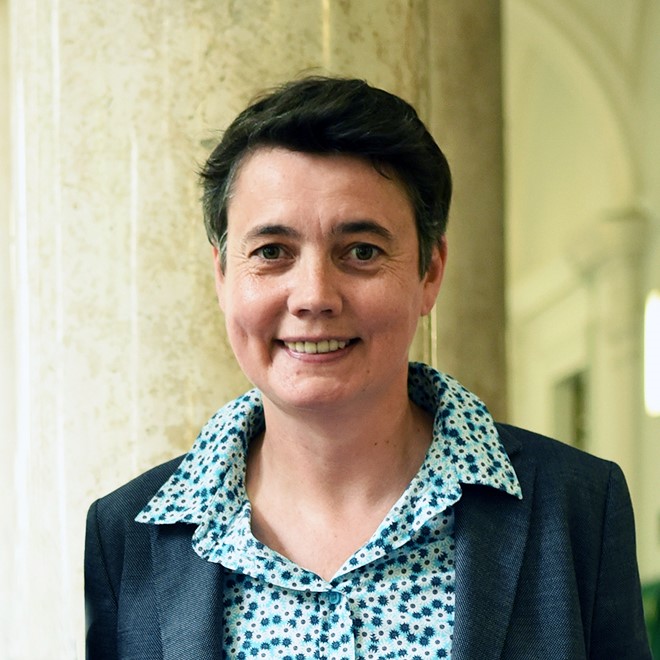
Astrid Veronig
Collaborator
University of Graz

Zach Rochman
Bus Mechanical Engineer (undergraduate student)
CU/Laboratory for Atmospheric and Space Physics

Trent Bjorkman
Bus Mechanical Engineer
CU/Laboratory for Atmospheric and Space Physics

Bryan Maas
Telescope Optical Engineer
JHU/Applied Physics Laboratory

Evan Burger
Telescope Mechanical Engineer
JHU/Applied Physics Laboratory

Rick Kohnert
LASP Project Manager
CU/Laboratory for Atmospheric and Space Physics

Matt West
Collaborator
Southwest Research Institute

Will Edgar
Bus Mechanical Engineer
CU/Laboratory for Atmospheric and Space Physics

Darius Mirhosseini
Student Systems Engineer
CU/Laboratory for Atmospheric and Space Physics

Ron Schulze
Project Manager
JHU/Applied Physics Laboratory

Gabe Berhsenyi
Mission Operator
CU/Laboratory for Atmospheric and Space Physics

Paris Buedel
Analysis Engineer
CU/Laboratory for Atmospheric and Space Physics

Grant Shaw
Instrument Mechanical Technician
JHU/Applied Physics Laboratory

Tom Woods
Co-Investigator
CU/Laboratory for Atmospheric and Space Physics

Barbara Thompson
Co-Investigator
NASA Goddard Space Flight Center

Trace Valade
Flight Software Engineer
CU/Laboratory for Atmospheric and Space Physics

Karol Grabczewski
System Assurance Manager
JHU/Applied Physics Laboratory

Sierra Flynn
Mission Operations Lead
CU/Laboratory for Atmospheric and Space Physics

Derrell Kittrell
Scheduler
JHU/Applied Physics Laboratory

Alan Sims
Electrical Engineer
CU/Laboratory for Atmospheric and Space Physics

Dean Pesnell
Co-Investigator
NASA Goddard Space Flight Center

Michael Kirk
Co-Investigator (Science Operations Center Lead)
NASA Goddard Space Flight Center
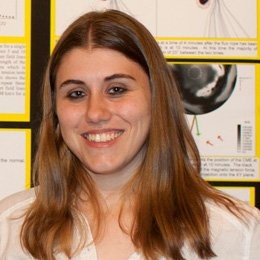
Christina Kay
Co-Investigator
NASA Goddard Space Flight Center

Andrew Jones
Co-Investigator
CU/Laboratory for Atmospheric and Space Physics

Marcus Van Zee
Bus Mechanical Engineer
CU/Laboratory for Atmospheric and Space Physics

Sarah Gibson
Co-Investigator
High Altitude Observatory

Yuhong Fan
Co-Investigator
High Altitude Observatory

Frank Eparvier
Co-Investigator
CU/Laboratory for Atmospheric and Space Physics

Karin Dissauer
Co-Investigator
Northwest Research Associates

Robin Colaninno
Co-Investigator
Naval Research Laboratory

Phil Chamberlin
Co-Investigator (LASP Institutional Principal Investigator)
CU/Laboratory for Atmospheric and Space Physics

Aaron Magner
Telescope Lead Engineer
JHU/Applied Physics Laboratory

Joan Burkepile
Co-Investigator
High Altitude Observatory

Evan Bauch
Mission Systems Engineer
CU/Laboratory for Atmospheric and Space Physics

Dan Seaton
Project Scientist
Southwest Research Institute

Gallery
News & Resources
Latest News
2022
Feb 02
New NASA Mission Will Capture First Complete Views of Sun’s Massive Explosions
Johns Hopkins APL
A new mission to unveil the mechanisms behind some of the Sun’s most explosive outbursts was selected as one of four new CubeSat missions for NASA’s Heliophysics Flight Opportunities in Research and Technology program, the agency announced in December.
Publications
2023
Mason, J. P., Chamberlin, P. C., Dissauer, K., et al., Uninterrupted Tracking of Coronal Mass Ejections, Bulletin of the American Astronomical Society, 55, 270, 2023.
Seaton, D. B., Caspi, A., Casini, R., et al., Improving Multi-Dimensional Data Formats, Access, and Assimilation Tools for the Twenty-First Century, Bulletin of the American Astronomical Society, 55, 361, 2023.
Seaton, D.B., West, M., Wexler, D., et al., A Strategy to Close Key Questions about the Middle Solar Corona During this Decade, Bulletin of the American Astronomical Society, 55, 360, 2023.
West, M., Seaton, D. B., Wexler, D. B., et al., Defining the Middle Corona, Solar Physics, 298, 78, 2023.
2022
J. P. Mason, D. B. Seaton, A. R. Jones, M. Jin, P. C. Chamberlin, A. Sims, and T. N. Woods, Simultaneous High Dynamic Range Algorithm, Testing, and Instrument Simulation, The Astrophysical Journal, 924, 63, 2022.
2021
J. P. Mason, P. C. Chamberlin, D. Seaton, J. Burkepile, R. Colaninno, K. Dissauer, F. G. Eparvier, Y. Fan, S. Gibson, A. R. Jones, C. Kay, M. Kirk, R. Kohnert, W. D. Pesnell, B. J. Thompson, A. M. Veronig, M. J. West, D. Windt, and T. N. Woods, SunCET: The Sun Coronal Ejection Tracker Concept, Journal of Space Weather and Space Climate, Topical Issue - Space Weather Instrumentation, 11, 20, 2021.
